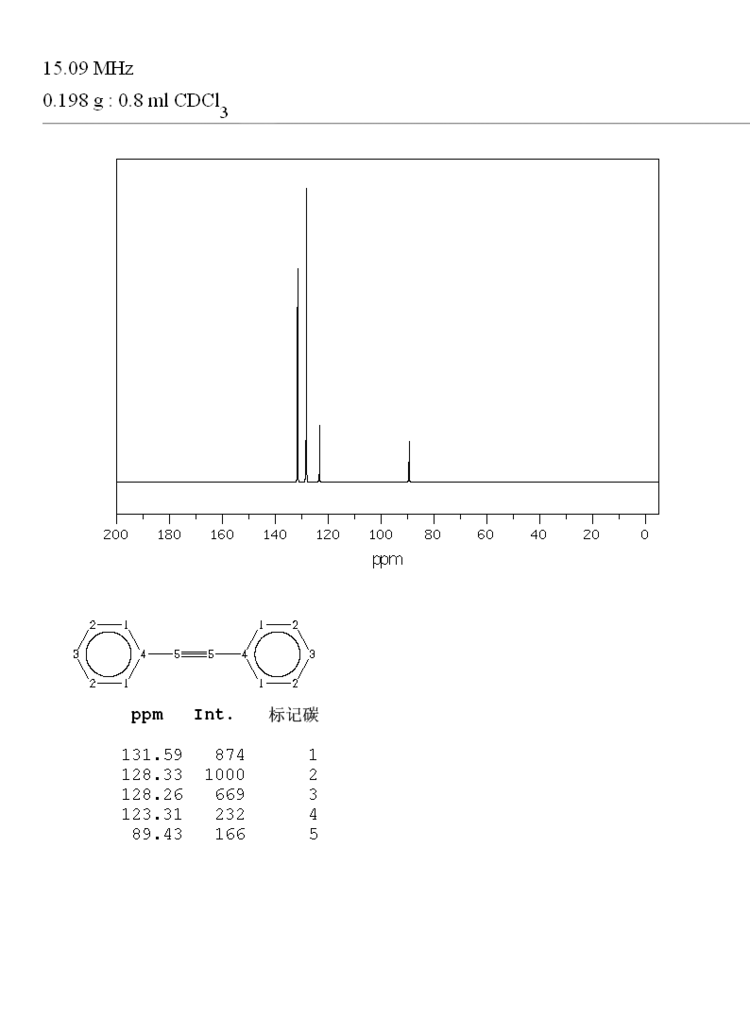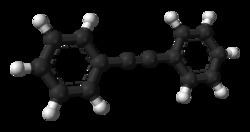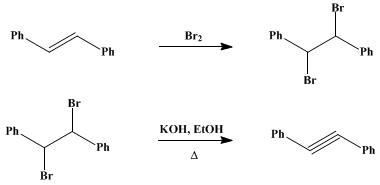Formula C14H10 Melting point 62.5 °C Appearance colorless solid | Molar mass 178.24 g/mol Density 990 kg/m³ | |
Related compounds | ||
Diphenylacetylene is the chemical compound C6H5C≡CC6H5. The molecule consists of phenyl groups attached to both ends of an alkyne. It is a colorless crystalline material that is widely used as a building block in organic synthesis and as a ligand in organometallic chemistry.
Contents

Preparation
Several preparations for this compound exist:

Interesting derivatives



References
Diphenylacetylene Wikipedia(Text) CC BY-SA
